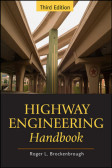Transportation
Section covers road, rail, air and nautical systems, including ports and terminals; materials and funding of various transportation components.
ARTICLES
Francis Scott Key Bridge Collapse
Kiewit Selected for Rebuild of Collapsed Baltimore Bridge
$1.2-billion bid was not the lowest submitted, but met other technical requirements, says state agency
Read More
PRODUCTS
The latest news and information
#1 Source for Construction News, Data, Rankings, Analysis, and Commentary
JOIN ENR UNLIMITEDCopyright ©2024. All Rights Reserved BNP Media.
Design, CMS, Hosting & Web Development :: ePublishing

















 Attend the ENR NY/NJ Infrastructure Forum—Building an Interconnected Region on Monday, September 16, to hear the latest details from public and private stakeholders about regional projects in the pipeline and partnership potential as you network with construction professionals in these dynamic sectors. Learn how emerging trends in areas such as bridge resilience, clean energy, private infrastructure investment and equity contracting will add challenges—but also opportunities for firms in design, construction, technology, finance and related areas.
Attend the ENR NY/NJ Infrastructure Forum—Building an Interconnected Region on Monday, September 16, to hear the latest details from public and private stakeholders about regional projects in the pipeline and partnership potential as you network with construction professionals in these dynamic sectors. Learn how emerging trends in areas such as bridge resilience, clean energy, private infrastructure investment and equity contracting will add challenges—but also opportunities for firms in design, construction, technology, finance and related areas.